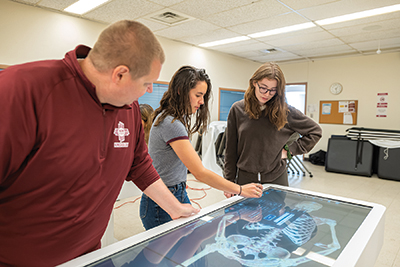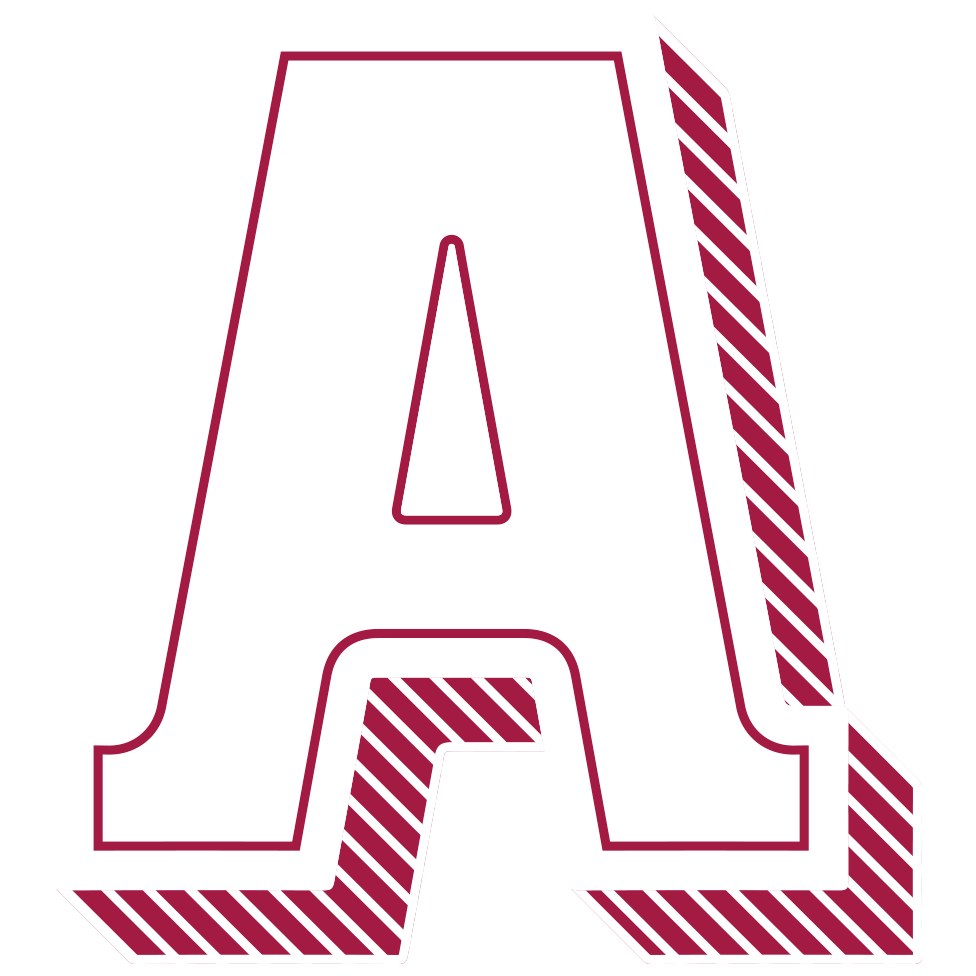It’s like a scene in a sci-fi movie: a group of people huddle over a long table with a glowing 3-D map of the human body, learning more about how organs and arteries work to support human life.
These anatomical tables are often seen inside of medical schools, but NMSU’s Department of Kinesiology is home to four of them thanks to funding from the Higher Education Emergency Relief Fund.
“The Anatomage tables were purchased to revolutionize how anatomy and physiology are taught. Students gain real hands-on experiences by doing virtual dissections, and learn in a format that is much more dynamic than models and textbooks,” says Christopher Aiken, interim head of the kinesiology department and kinesiology program director.
“They provide an interactive experience that can only be topped by looking at an actual cadaver,” says kinesiology student Joshua Vawter. “However, they do have the advantage of having the ability of looking at multiple bodies, and being able to choose how deep into the body you want to study. It is the best interactive experience possible in the classroom setting.”
The tables allow for virtual engagement with bones, nerves and layer-by-layer dissection. Some students likened the tables to playing a video game while learning at the same time.
“The tables worked and looked as good as a game of ‘Call of Duty’ on a PlayStation 5,” says kinesiology student Joshua Rosas. “I learned more than I’d ever learn playing video games.”
Other students say they enjoy learning about the human body without having to perform an actual dissection.
“The Anatomage tables are a great learning tool for students like me, because they show cadavers without students having to rely on the old way of dissecting them,” said kinesiology student Cristian Topete. “It is a new way for students to learn the inner workings of a human body without getting messy, and shows an incredible use of technology.”
As the anatomical tables are introduced to students, the kinesiology department hopes to continue student engagement and retention by introducing the tables into more courses.
“As a kinesiology major, this is a great way to learn how the human body works, and to see how every little tendon, muscle and ligament work, and so much more,” says student Jillian Bailey. “I am excited to continue to use them.”

Christopher Aiken, interim head of the NMSU Department of Kinesiology, discusses an anatomy lesson with students Sophia Jaramillo (center) and Leah Downey using one of four high-tech Anatomage tables. The tables were purchased with funding from the Higher Education Emergency relief fund and are typically used in medical schools as a way to explore the anatomy and physiology of the human body.

Dove Hall, Room 212
305 N. Horseshoe Drive
Las Cruces, NM 88003